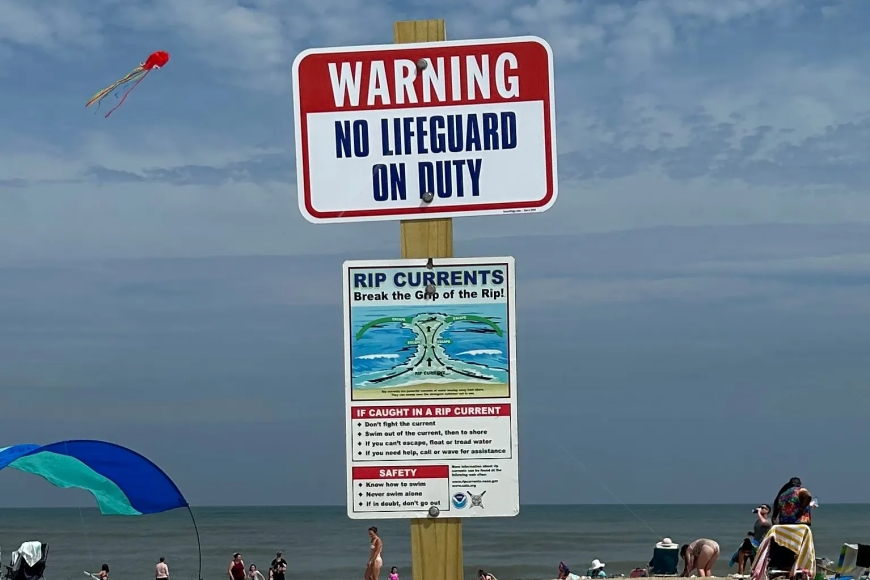Lifeguard Shortages Threaten Safety at National Parks Amid Budget Cuts
CBS News investigation highlights how federal budget cuts, particularly during the Trump administration, led to long-term staffing problems for the National Park Service (NPS)—putting swimmers, hikers, and families at greater risk.

Credit: Original reporting and broadcast by CBS News
A growing crisis is unfolding across U.S. national parks: lifeguard shortages are leaving beaches unguarded, just as record numbers of families head outdoors for summer recreation. A CBS News investigation highlights how federal budget cuts, particularly during the Trump administration, led to long-term staffing problems for the National Park Service (NPS)putting swimmers, hikers, and families at greater risk.
? Key Causes of the Lifeguard Shortage
-
Reduced funding for seasonal staffing
A hiring freeze and financial cutbacks left thousands of summer positionsincluding lifeguardsunfilled. -
Training costs & access
Lifeguard training through providers like the American Red Cross or American Lifeguard Association (ALA) is often expensive, especially for teens or underserved communities. -
Lack of early outreach & education
Many potential lifeguards never receive information about how to get certified or where to train. -
Poor job conditions
Remote beaches, low pay, and short contracts make lifeguard roles less attractive compared to private employers.
?? Consequences on the Ground
-
Unsupervised swimming zones in areas like Sandy Hook, Great Kills Park, and Assateague Island
-
Delayed emergency response times in critical situations
-
Increased drowning risk, particularly for children and non-swimmers
-
Erosion of public trust in the safety of national parks
When people go to the beach, they expect someone will be there if something goes wrong, one parent told CBS.
?? Education Centers That Can Help
To address the shortage long-term, local and national education institutions must play a more active role. Potential collaborators include:
-
Community colleges & technical schools
Programs at institutions like Miami Dade College, Austin Community College, and Santa Monica College can offer lifeguard certification for credit or workforce training. -
High schools & athletic academies
Schools can embed lifeguard certification into PE, health sciences, or summer work readiness programs. -
Vocational and recreational training hubs
Recreation departments, like NYC Parks & Rec or Los Angeles Aquatics, can run youth-oriented certification drives. -
Online + blended learning models
Using hybrid training modules offered by major certifiers (listed below) can expand access across rural or low-income areas.
?? Solutions to Reverse the Shortage
-
Create a Federal Lifeguard Grant Program
Provide funding for public institutions, nonprofits, and municipalities to offer free or subsidized lifeguard training. -
Incentivize Schools to Host Training
Allow schools and colleges to issue graduation credit or community service hours for lifeguard certification. -
Launch an NPS Lifeguard Corps
Similar to AmeriCorps, this seasonal program could recruit, train, and place certified young adults at federal beaches with travel stipends, housing, and leadership tracks. -
Streamline National Hiring
Reduce red tape in seasonal lifeguard onboarding by simplifying the USAJobs application process and speeding up background checks. -
Community-Based Swim Safety Programs
Support local YMCAs, swim clubs, and Boys & Girls Clubs to offer early water safety and rescue skill training starting at age 1213.
? Top Lifeguard Certification Providers (Nationally Recognized)
| Provider | Strengths |
|---|---|
| American Red Cross | Most widely accepted, includes CPR/AED, strong curriculum, nationwide reach |
| American Lifeguard Association (ALA) | Flexible training formats, widely accepted, especially for private sector |
| Ellis & Associates | Preferred for water parks and resorts, intense real-time response focus |
| YMCA Lifeguard Program | Community-based, often subsidized, integrated with youth development |
Recommendation:
? For federal parks and public pools, the American Red Cross remains the gold standard due to its national recognition, integration with CPR/AED, and robust instructor network. For flexible or hybrid models, the ALA is a strong alternative.
? Looking Forward
Solving the lifeguard shortage wont happen overnight. But by connecting public safety needs with education systems, local leadership, and accessible training, national parks and communities can rebuild a lifeguard pipeline that protects livesthis summer and beyond.
?? About the Author:
Benjamin Owen Leo is a civic-minded journalist and youth advocate focused on workforce training, community safety, and public education. His work highlights programs that prepare individuals for high-impact careers in recreation, emergency response, and health. Tamoor is especially committed to bridging access gaps in rural and underserved areas through training, storytelling, and policy solutions.



































